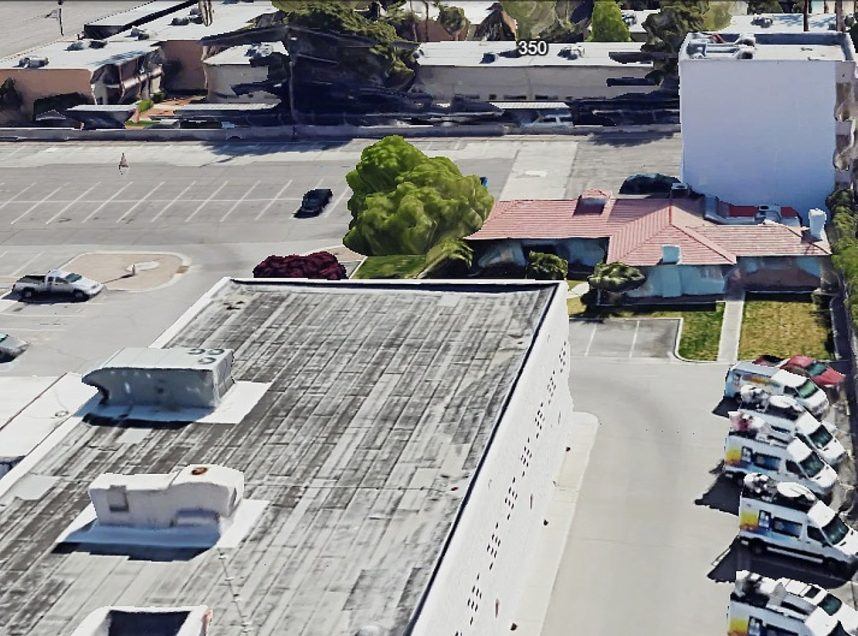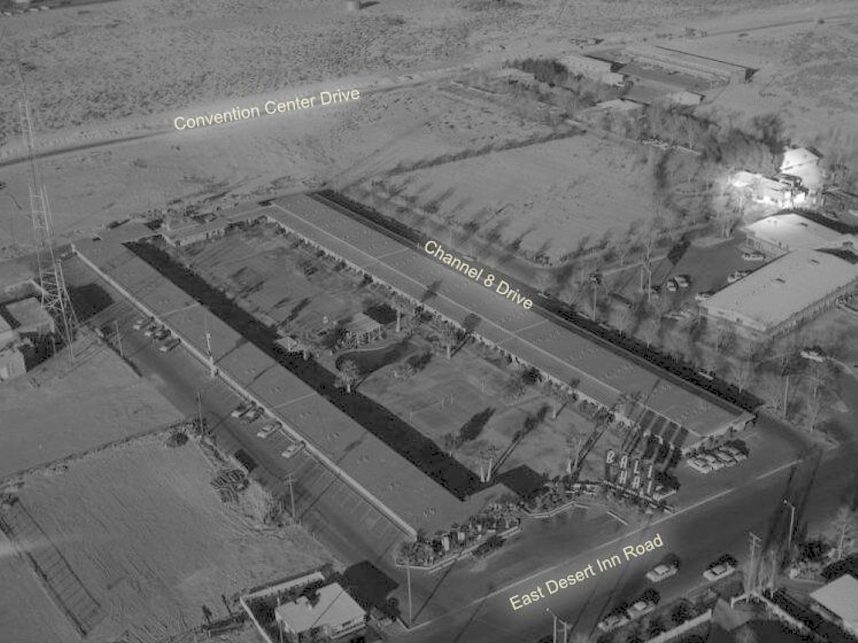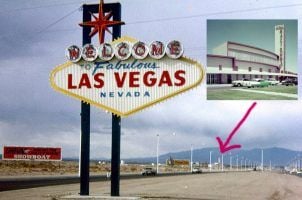VEGAS MYTHS BUSTED: Howard Hughes Lived in The Green House
Posted on: October 28, 2024, 09:00h.
Last updated on: October 31, 2024, 03:36h.
What makes this myth so pervasive and difficult to challenge is that it was started by a reputable Las Vegas news organization.

Recently, the Clark County Commission approved $1.5 million to relocate what is known to locals as “the Green House” (or “the Howard Hughes House”) from its current location to the Clark County Museum, 18 miles away in Henderson, due to its historic significance.
The house has been identified over the years in dozens of news stories by KLAS-TV, Las Vegas’ CBS affiliate station, as the former home of the eccentric billionaire during the eight months he resided in Las Vegas from 1953 to 1954.
But, according to Hughes’ closest surviving aide, that claim is entirely false.
Dream House
Featuring three bedrooms, two baths, a living room, kitchen, and dining room, the Green House was built in 1951 as a bungalow for the Sun Villa Motel, later that decade known as the Blair House.

Hughes leased it from the motel’s owners, James and Beatrice Fulcher, but only used it as an office.
“He worked from there when he established the Howard Hughes Medical Institute,“ Paul Winn told Casino.org. “But he never spent a single night there.”
Winn, 93, was employed by Hughes’ company from 1957 until 1989, first as an operations secretary and, eventually, rising to director of corporate records.
According to Winn, Hughes rented one of the nicest rooms at the Flamingo for the entirety of his first stay in Las Vegas, to which he returned every night.
Winn said this information came directly from Kay Glenn, who ran the office in the Green House for Hughes as his operations supervisor, and who later became one of Winn’s closest friends.
Glenn, along with Bill Gay and Nadine Henley, constituted the innermost circle of people managing Hughes’ business and personal affairs. In 2020, Glenn was the final member of that circle to pass away.

This version of events makes more sense. From an oil company he inherited from his father, as well as from his own financial successes in aviation, film production, and real estate, Hughes was nearly Elon-Musk wealthy by the 1940s. His primary residence then was a 10K square-foot palace in LA that sold last year for $23 million.
After his first Vegas sojourn, according to Winn, Hughes — known for flaunting his wealth — moved into three or four lavish bungalows at the Beverly Hills Hotel.
Hughes wasn’t going to slum it in anything as plain as the Green House. However, for his businesses, like most billionaires, he was happy to cut costs wherever he could.
“Hughes was not even in the office a lot,” Winn said. “He was only there a little bit.”
How Weird, Hughes
When Hughes left Las Vegas for the first time — in 1954 at age 48 — he ordered the Green House sealed until his return. For whatever reason, he wanted everything meticulously preserved the way it was.
Gay, later president of Hughes’ Summa Corporation, secured its doors and windows with tape, then painted over the tape with a sealer.
All of Hughes’ aides were used to eccentric requests.

In November 1966, Hughes indeed returned to Las Vegas, but never to the Green House. He kept leasing it — and kept it sealed — while living on the top two floors of the Desert Inn, which was only half a block away.
In March 1968, Hughes purchased KLAS for $3.6 million ($24 million today) from Hank Greenspun, publisher of the Las Vegas Sun newspaper, who had founded the TV station in 1953. By then, the Green House happened to be located on the station’s property — in its parking lot — where it remains today.
But that’s not why Hughes bought the station. (We’ll get to the reason in just a second, promise.)
Hughes continued leasing the sealed Green House even after he left Las Vegas for the last time in 1970. In 1972, he finally purchased the property through his Hughes Tool Company.
Why Hughes Bought KLAS
See? We told you we’d get to it.
Hughes bought the TV station just so he could dictate what movies it would play at night. Decades before VCRs were a thing, he wanted a way to control the movies he drifted off to at the Desert Inn.
This seems like a myth but, like so much associated with Hughes, it’s not.
Sometimes, if there was any part of a movie Hughes wanted to watch again, he would have someone call the station manager to restart the movie.
“I wasn’t there, but other people have told me this really happened,” Winn said, “and I don’t doubt it for a second.”
Unseal Team

After Hughes died in April 1976, Winn said, he and another Hughes employee, Randy Hunter, unsealed the Green House and found a 22-year-old time capsule.
They were there to search the property for Hughes’ will. Winn even jackhammered the concrete floor in the living room to bits, because a metal detector they brought with them indicated something they thought might be a safe.
“It turned out to be a pipe,” he said. “I personally thought it was a stupid thing to do, but the others wanted it done, so I did it. But if there was a safe buried in the floor, Kay or someone else would have known about it, because they would have been the ones who buried it.”
They never found Hughes’ will, but what they did find was cataloged in the 1979 book “Empire: The Life, Legend and Madness of Howard Hughes” by Donald Bartlett and James Steele. It included:
- Two newspapers, dated Oct. 13, 1953 and April 4, 1954
- Keys to Room 186 at the Flamingo Hotel (possibly Hughes’ room) and to Room 401 at the Hotel Miramar (which was torn down to build the Castaways)
- Several Sahara casino chips
- A letter dated Dec. 5, 1952, from someone named Jane (possibly actress Jane Russell, who starred in the Hughes-produced 1952 film “The Las Vegas Story” and was romantically linked to Hughes)
- A script for “Son of Sinbad,” a Hughes-produced movie that was released in 1955
- A 1953 appointment book believed to belong to actress Jean Peters, star of the Hughes-produced 1943 film “The Outlaw” (along with Jane Russell)
- Eight rotary telephones.
“That sounds about right,” Winn said of the list, noting that he also found a silk robe in a box, two pairs of shoes, and two white shirts in Hughes’ size in a closet — in addition to a 22-year-old loaf of bread in the still-running refrigerator.
Winn said he and Hunter took all the items — except the phones, the newspapers and the petrified bread — back to the Hughes Company’s corporate headquarters and filed them in the records room.
None of the items was ever returned to the Green House.
Myth Understood
In 1978, Landmark Communications, a national media corporation, purchased KLAS from a trust left by Hughes. The $5.5 million it paid also got Landmark the Green House.
Landmark restored the emptied and jackhammered structure, making it a rental property for executives and managers visiting Las Vegas from other markets. KLAS also used it for board and editorial meetings and station parties, and ad reps showed it off to advertising executives during sales pitches.

According to Winn, KLAS benefited from decades of embellishing the property’s historicity, both financially and in cultural stature.
“It was a big selling point for them and they used it in their marketing,” Winn said.
The myth that Hughes had lived there conferred major Vegas cred on KLAS, so it was repeated often, according to Winn. And the legend grew, not unlike Pinocchio’s nose, to eventually include trysts with movie starlets that the billionaire used the Green House bedrooms for.
“It was all BS,” Winn said. “I just think it’s so damn ridiculous that a news organization spent so much time making things up.”
When asked to cite a specific example, Winn cited former KLAS news director Bob Stoldal’s claim, shown here, that the house was full of suits when it was unsealed, which proves that Hughes had lived there.
“No, it was not, it simply was not,” Winn insisted, “unless somebody put them in there after I left. We went through every inch of that house!”
Landmark’s restoration did add period pieces to the Green House that weren’t original to it — much the way a museum would after acquiring a dead president’s boyhood home. These included framed photos of Hughes, posters of the movies he produced, and simulated personal effects including, according to Winn, a Voicewriter Dictaphone and a reel-to-reel tape recorder.
“I don’t remember seeing either of those,” Winn said, “and I have an excellent memory. And Hughes would never allow any of us to have a tape recorder.”
In 2022, these and other items were auctioned off, raising the $1.5 million that will now go toward relocating the Green House, which includes dismantling and reassembling it. And that’s a good thing.
The bad thing is that the people who purchased anything but a telephone in that auction were under the mistaken impression that they had come into possession of some extremely rare pieces of Las Vegas history.
A House Divided
To KLAS‘ credit, new management has allowed a new crop of reporters to re-examine Hughes’ mythical residency in their parking lot, and new conclusions are being drawn.
Gen-Z’er Brian Will’s reporting on Clark County’s approval of the relocation funds was the station’s first story on the Green House ever to directly contradict the myth.
“We don’t believe that Howard Hughes actually slept in the house,” Geoff Schumacher, an historian for the Mob Museum and author of the 2008 book “Howard Hughes: The Power, Paranoia and Palace Intrigue,” is quoted as saying in the story.
Schumacher added, “We don’t believe he had people over — whether that be women or others.”
Look for “Vegas Myths Busted” every Monday on Casino.org. Click here to read previously busted Vegas myths. Got a suggestion for a Vegas myth that needs busting? Email corey@casino.org.
Related News Articles
VEGAS MYTHS RE-BUSTED: Buddy Hackett’s ‘Oral Contract’
VEGAS MYTHS RE-BUSTED: Hunting for Bambi
VEGAS MYTHS BUSTED: Videos Never Displayed on the Sphere
Most Popular
FTC: Casino Resort Fees Must Be Included in Upfront Hotel Rates
Genovese Capo Sentenced for Illegal Gambling on Long Island
NBA Referees Expose Sports Betting Abuse Following Steve Kerr Meltdown
UPDATE: Former Resorts World & MGM Grand Prez Loses Gaming License
Most Commented
-
UPDATE: Whiskey Pete’s Casino Near Las Vegas Closes
— December 20, 2024 — 30 Comments -
Caesars Virginia in Danville Now Accepting Hotel Room Reservations
— November 27, 2024 — 9 Comments -
UPDATE: Former Resorts World & MGM Grand Prez Loses Gaming License
— December 19, 2024 — 8 Comments -
FTC: Casino Resort Fees Must Be Included in Upfront Hotel Rates
— December 17, 2024 — 7 Comments
















Last Comment ( 1 )
Remember working in the soft count room and auditing office right out of UNLV in June 1971. We had to call LA when we did the day's P&L with the win or loss for the day, and YTD by 1 PM. In those days, we had a cash drop of about $225,000 which $100,000 was in in hundred's. Room revenue was about $12-$13,000 daily all of which was comped in those days. The Crystal Room (showroom) had about $12-$13,000 in cash revenue every night. The Desert Inn got a subpoena from the Select Committee on Watergate and I was the 'gofer' who had to go and get the front desk registration cards for those named. Records also showed up. from the former operating company Desert Inn Operating company which included the Stardust. Found a nice crystal decanter with a brass band around the neck with the old DI Logo on, still have it. Robert Maheu who often walk thru the accounting office as well as other Huges Aides in those days.